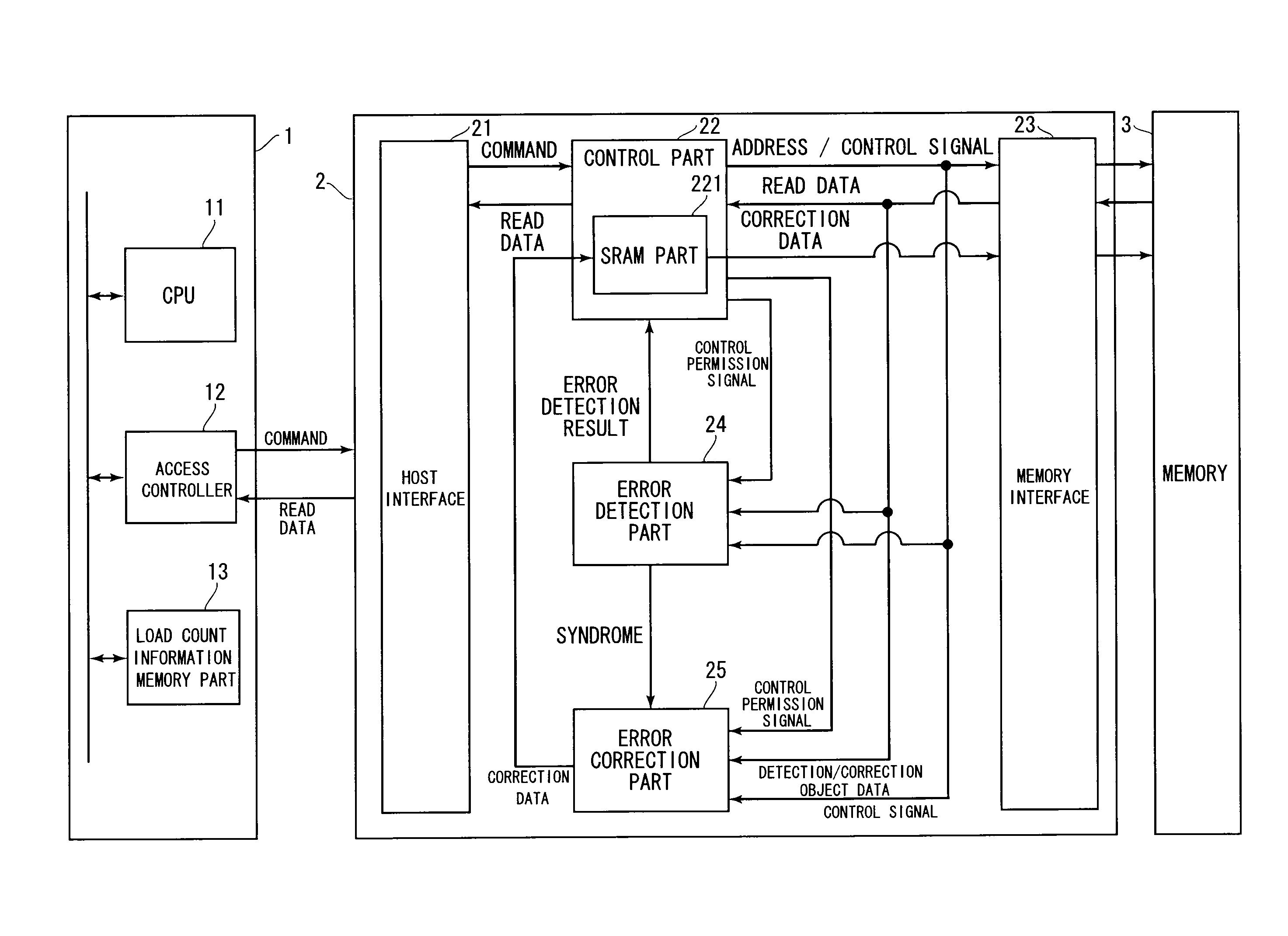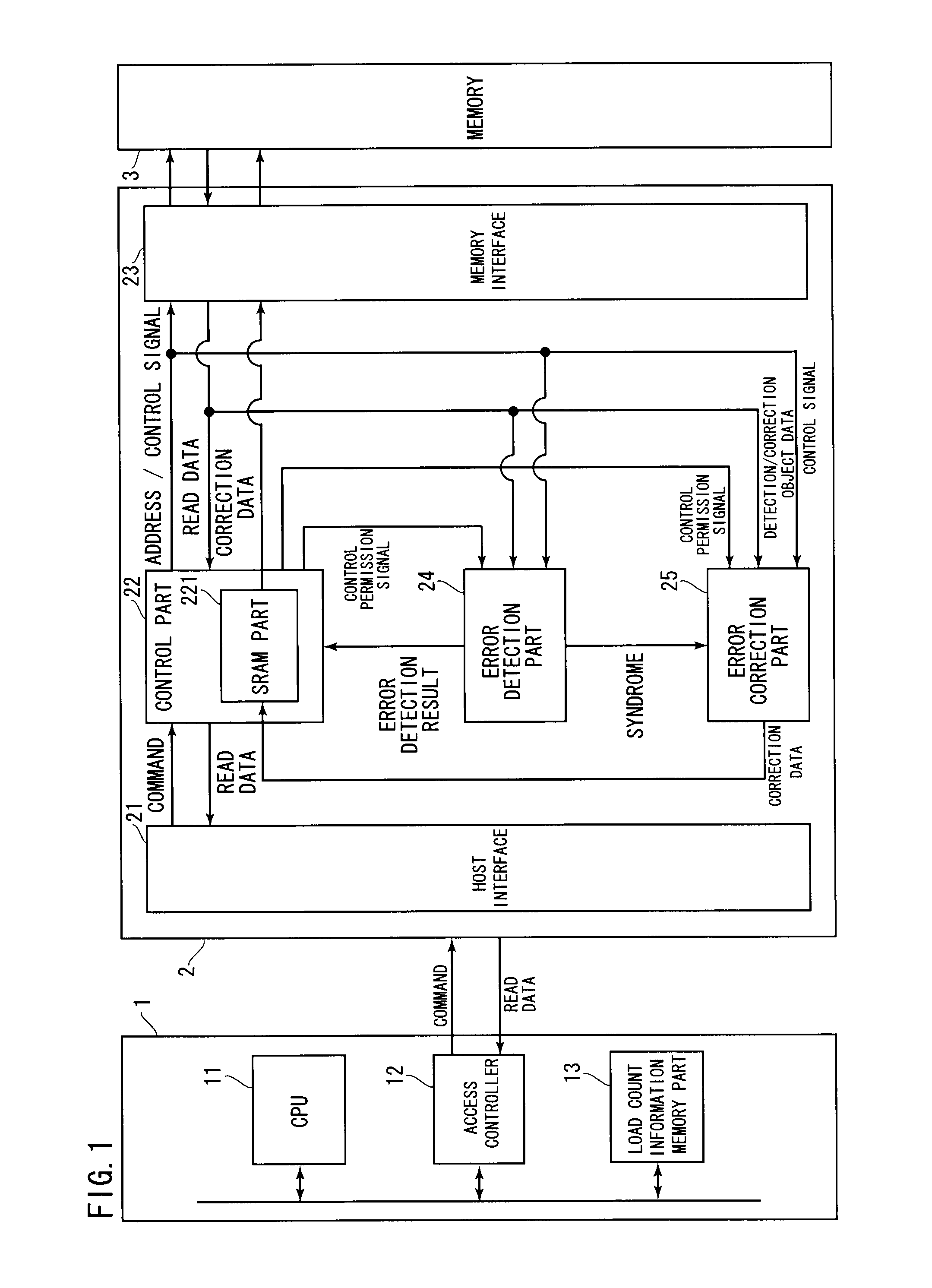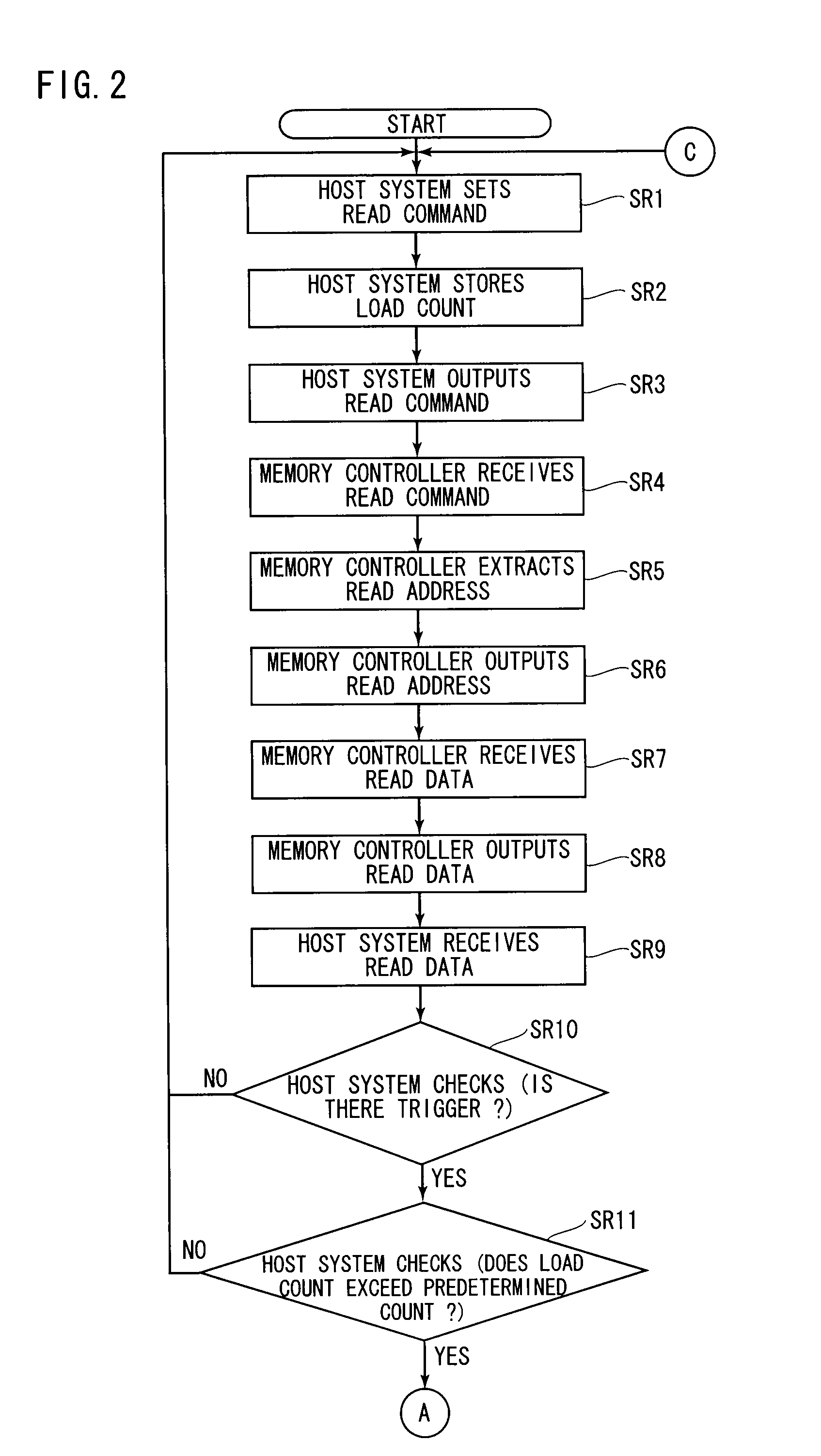Memory access system
a memory access and memory technology, applied in the field of memory access systems, can solve the problems of unintended rewriting of programs, inapplicability, and inability to recover the function of unselected cells, so as to avoid or reduce the phenomenon of read disturb, prevent frequent error detection, and reduce burden
- Summary
- Abstract
- Description
- Claims
- Application Information
AI Technical Summary
Benefits of technology
Problems solved by technology
Method used
Image
Examples
Embodiment Construction
Constituent Elements of Memory System of this Preferred Embodiment
[0028]Hereinafter, the preferred embodiment of the present invention will be discussed with reference to figures. In the read disturb phenomenon, when data stored in a reading area is repeatedly read out, there is a possibility that data stored in a non-reading area might be unintendedly rewritten. Then, a memory system of this preferred embodiment performs error detection and error correction not only on the reading area but also on the non-reading area in order to avoid the read disturb phenomenon.
[0029]If the memory system performs the error detection and the error correction on the reading area and the non-reading area for each read access, however, there is a possibility of causing an overhead of software processing in the memory system. For this reason, the memory system measures the number of loads (load count), which is the number of read access loads imposed on the non-reading area when read access is made to...
PUM
 Login to View More
Login to View More Abstract
Description
Claims
Application Information
 Login to View More
Login to View More - R&D
- Intellectual Property
- Life Sciences
- Materials
- Tech Scout
- Unparalleled Data Quality
- Higher Quality Content
- 60% Fewer Hallucinations
Browse by: Latest US Patents, China's latest patents, Technical Efficacy Thesaurus, Application Domain, Technology Topic, Popular Technical Reports.
© 2025 PatSnap. All rights reserved.Legal|Privacy policy|Modern Slavery Act Transparency Statement|Sitemap|About US| Contact US: help@patsnap.com



